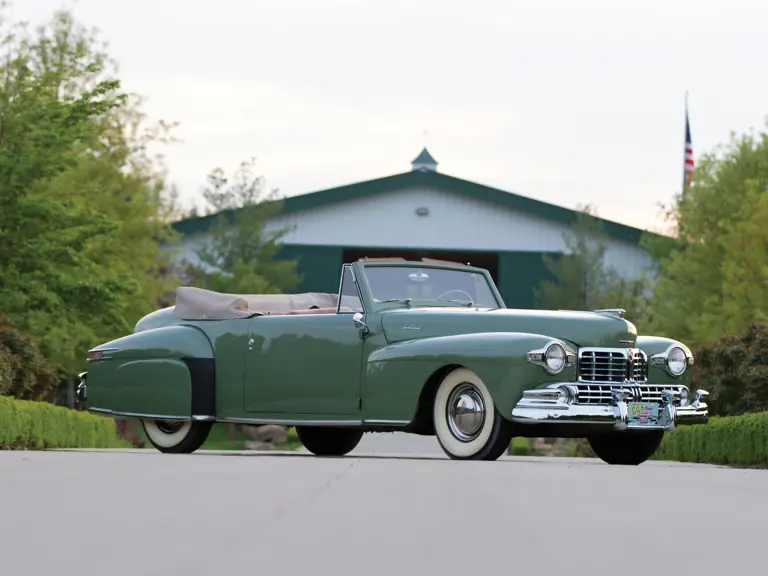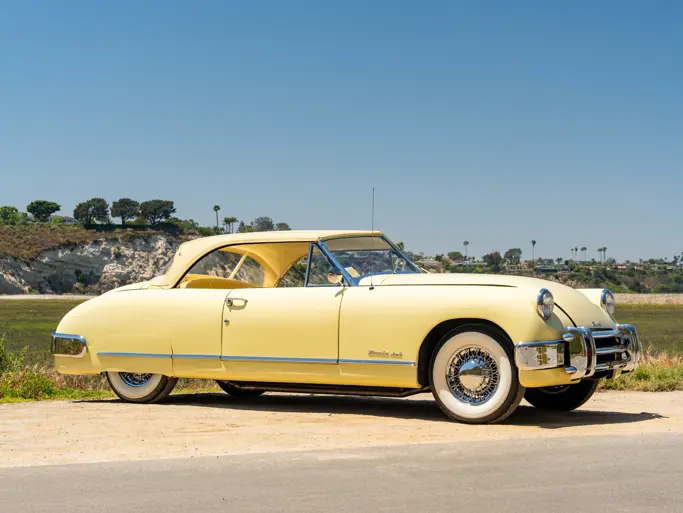 | Fort Lauderdale, Florida
| Fort Lauderdale, Florida
If E.T. “Bob” Gregorie gave life to the Lincoln Continental, surely Edsel Ford was its godfather (and the Lincoln-Zephyr its mother). The Zephyr, which had its roots in John Tjaarda’s “Sterkenberg” studies of the late 1920s, became the savior of Lincoln at its 1935 introduction, a time when the big Model Ks were selling barely 2,000 cars a year. A semi-unitary sedan or coupe, the Zephyr used a small V-12, at 267 cubic inches hardly half the size of the K’s engine and, more importantly, sold for a third its price. Lincoln sales promptly rose by a factor of six.
Returning from Europe in 1938, Edsel sketched for Gregorie a concept that he wished to build on a Ford chassis. Gregorie did detailed drawings based on a Zephyr convertible instead, and the result was the Continental. The hood and fenders were extended about a foot, and the car sectioned horizontally by four inches. The bustle back and outside “Continental” tire were the finishing touches. The car was built and Edsel took it to Florida that winter. Legend says that his friends were so taken with the car that 200 of them placed orders.
True or not, the Continental went into production in December 1939, and a coupe version soon followed. Production was modest, just 404 in 1940 and 1,250 the following year, but it had the intended effect: a trend. Jackie Cooper had one, and Frank Lloyd Wright and Raymond Loewy both bought them to customize for themselves.
By 1941, the Model K Lincoln was gone; the Zephyr was the Lincoln. For 1942, the modernist style dictated a more massive front end and postwar tastes made it heavier still in 1946. In all, 5,324 Lincoln Continentals were built before the model was discontinued after the 1948 model year.
This 1948 Cabriolet, one of 738 built in the model’s final season, has had but three owners. The brown leather interior is original, although one has to look carefully to see the evidence. It is equipped with factory power top, power windows, radio and heater. Showing barely 55,000 miles, believed to be original, it has had a complete mechanical rebuild: engine, drive train and brakes. A California car, its body is un-rusted and unhurt; the contours are excellent and the green paint very good. The brightwork shows just minor surface scratches. Underneath, the car is clean but not detailed. The trunk holds its original jack in a bag stenciled “Strickland Motors, Inc., Lincoln-Mercury…Indianapolis.” It is touches like these that speak volumes about authenticity.





